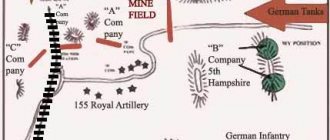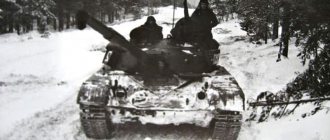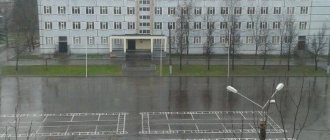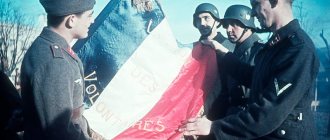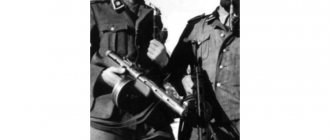Photo: mintpressnews.com
The COVID-19 coronavirus pandemic that has gripped the world and Europe is making serious changes to US military plans. The scope of the DEFENDER-Europe 20 exercise, which was supposed to, but never took place, was the largest transfer of troops to Europe from the continental United States in the last quarter century, has been significantly reduced . And now Washington has to make adjustments to the rotation schedule of the rotational armored brigade combat group stationed in Europe. About how the American command decided to get out of this situation and how the situation will affect the US military presence in Europe, read the article by the director of the Center for Research of the Baltic Region Countries of the Institute of Regional Studies of the Baltic Federal University. I. Kant Yuri Zverev.
Rotation and coronavirus
Let me remind you that the United States announced its decision to deploy an Armored Brigade Combat Team (ABCT) in Europe on a rotation basis (with rotation every nine months) back in March 2016, under President Barack Obama. In July 2016, this US initiative was welcomed by the NATO Summit in Warsaw. At the same time it was announced that its headquarters would be located in Poland.
The first rotational brigade to arrive in Europe in January 2022 was the 3rd Armored Brigade Combat Team, 4th Infantry Division (3/4 ABCT) from Fort Carson, Colorado. Since then, rotations have been carried out regularly and practically without failures. Since October 2019, the 2nd ABCT of the 1st Cavalry Division (2-1 CD) from Fort Hood (Texas) has been in Europe for the fifth rotation (table)
Table 1. US Armored Brigade Combat Team (ABCT) rotations in Europe.
Units of the 2nd ABCT, 1st Cavalry Division are currently deployed in several European countries. In Poland, this brigade combat group includes:
– Headquarters and headquarters company (Zagan, Lubuskie Voivodeship);
– 4th squadron of the 9th cavalry regiment “Darkhorse” (4-9 CAV) (Świętoszów, Lower Silesian Voivodeship);
– 3rd Division of the 16th Field Artillery Regiment “Rolling Thunder” (3-16 FAR) (Camp Saint Barbara in Toruń, Kuyavian-Pomeranian Voivodeship);
– 8th engineer battalion “Trojan Horse” (8 BEB) (Boleslawiec, Lower Silesian Voivodeship);
– 15th Logistics Battalion of the Gamblers Brigade (15 BSB) (Skwierzyna, Lubusz Voivodeship).
– 1st Battalion, 9th Cavalry Regiment (1-9 CAV) “Head Hunters”, 2nd ABCT, is stationed in Pabrade, Lithuania. The 1st Battalion, 8th Cavalry Regiment "Jumping Mustangs" (1-8 CAV) is located in Grafenwoehr, Bavaria, Germany, and the 1st Battalion, 5th Cavalry Regiment "Black Knights" (1-5 CAV) is located in Grafenwoehr, Bavaria, Germany. at the Mihail Kogalniceanu air force base in Romania. Company C, 1st Battalion, 5th Cavalry Regiment, is stationed at the Novo Selo training ground in Bulgaria.
The planned rotation of the 2nd ABCT of the 1st Cavalry Division was supposed to take place in June-July 2022, but the coronavirus made adjustments to these plans. There is no guarantee that the epidemic will end by this time and that borders between European countries will open.
Moreover, the situation is getting worse. As of March 20, there were approximately 35 cases of coronavirus among US troops in Europe. About 2,600 U.S. military personnel and civilian employees of U.S. forces in Europe were in self-isolation as of the same date. On March 25, 2022, U.S. Secretary of Defense Mark Esper issued an order prohibiting the movement of U.S. military personnel, civilian personnel, and members of their families to and from foreign countries for a period of 60 days (excluding those returning from Afghanistan), and there is no guarantee that this the ban will not be extended.
In this situation, the deployment of a new brigade combat team to replace the 2nd ABCT of the 1st Cavalry Division was in question. However, for the DEFENDER-Europe 20 exercise in February 2022, the 2nd Armored Brigade Combat Team of the 3rd Infantry Division (2/3 ABCT), known by the nickname “Spartan” (“ Spartan"), which is currently deployed at the Drawsko-Pomorskie training ground in Poland. In its composition the following arrived in Europe:
– Headquarters and headquarters company;
– 2nd Battalion, 69th Armored Regiment (2-69 AR);
– 3rd Battalion, 6th Armored Regiment “Hounds of Hell” (3-67 AR);
– 3rd Battalion, 15th Infantry Regiment “China” (3-15 IN);
– 6th squadron of the 8th cavalry regiment “Mustang” 96-8 CAV);
– 1st Battalion, 9th Role Artillery Regiment “Battlekings” (1-9 FAR);
– 9th Brigade Engineer Battalion (9 BEB);
– 703rd Logistics Battalion of the Maintain Brigade (703 BSB).
So it makes sense that 2/3 ABCT Commander Colonel Patrick O'Neill informed the families of the Brigade Combat Team on March 23, 2022. According to it, 2/3 ABCT will not return to Fort Stewart, Georgia, this summer. , but will remain entirely in Europe as a regional presence force under Operation Atlantic Resolve.
Chiefs of Staff
- 07/14/1889 - 11/06/1896: Colonel Nechaev Nikolai Ivanovich
- 11/22/1896 - 02/24/1900 - Colonel Zegelov Alexander Alexandrovich
- 04/05/1900 - 03/24/1904 - Colonel Borisov Vyacheslav Evstafievich
- 03.24.1904 - 07.29.1904 - Colonel Nikolai Khristoforovich Kalachov
- 09/28/1904 - xx.xx.1905 - Colonel Genishta Vladimir Ivanovich
- 09/03/1905 - after 06/01/1914 - lieutenant colonel (from 04/22/1907 colonel) Sokalsky Ivan Alekseevich
- 08.1914 - 06.08.1915 - Colonel Romanovsky Ivan Pavlovich
- 08/15/1915 - 04/09/1916 - Colonel Plekhanov Sergei Nikolaevich
- 11/27/1916 - 10/15/1917 - Lieutenant Colonel Vitkovsky Konstantin Konstantinovich
History of the Spartans
The Spartan Brigade is formally the youngest armored brigade combat group in the United States. It was not until November 2016 that the Pentagon decided to transform the 2nd Infantry Brigade Combat Team (IBCT) into an armored brigade combat team, the 15th in the US Army (including the Army National Guard). However, the history of the brigade dates back to World War I: it was created at Camp Green (North Carolina) on November 12, 1917 as the headquarters detachment of the 5th Infantry Brigade, 3rd Division.
In 1918, the brigade was transferred to help the French on the Western Front. There it participated in the Third Battle of the Aisne and the Battle of the Marne, for which the 3rd Division received the nickname "Marne Rock". The brigade then helped break the German front and capture the city of Metz during the Battle of Saint-Michel. Finally, the “Spartans” took part in the Meuse-Argonne Offensive, which ended the war. Brigade officer John Barkley received the United States' highest military award, the Medal of Honor, for his heroic actions at Kuehnel on October 7, 1918.
In May 1921, the Spartan Brigade was reorganized and redesignated as Headquarters and Headquarters Company, 5th Infantry Brigade, 3rd Division. From 1936 to 1938 The brigade commander was Brigadier General George Catlett Marshall (later a five-star general, US Army Chief of Staff 1938-1945, US Secretary of State 1947-1949, US Secretary of Defense 1950-1951, and 1953 Nobel Peace Prize laureate .). On October 16, 1939, the brigade was disbanded at the Vancouver (Washington) barracks due to changes in the structure of the US Army.
The unit was re-established in the regular US Army only on April 18, 1963 and renamed Headquarters and Headquarters Company, 2nd Brigade, 3rd Infantry Division. On June 17, 1963, the 2nd Brigade was activated in Kitzingen (Bavaria, Germany) as a headquarters, to which one armored and two mechanized infantry battalions were subordinate.
The brigade was stationed opposite the famous Fulda Gap on the border of the GDR and the Federal Republic of Germany, which was considered by NATO the main direction of a possible Soviet invasion of Western Europe, and remained the main force of the 3rd Infantry Division. After the end of the Cold War on January 15, 1994, the 2nd Brigade was disbanded.
On February 16, 1996, the brigade was re-established at Fort Stewart, Georgia, by redesignating the 2nd Brigade, 24th Mechanized Division as the Armored Heavy Brigade, 3rd Infantry Division, XVIII Airborne Corps, Rapid Deployment Force. Over the next six years, the brigade deployed numerous times to the National Training Center (NTC) (Fort Irwin, California) and to Kuwait to protect it from potential aggression from Iraq.
On March 20, 2003, the brigade as part of the US 3rd Infantry Division entered the war with Iraq. On April 5, the 1st Battalion Combat Team, 64th Armor Regiment, 2nd Brigade (Task Force 1–64 Armor) conducted Operation Thunder Run One to probe Iraqi defense lines. A group of 29 M1A1 Abrams tanks and several hundred soldiers in infantry fighting vehicles and armored personnel carriers entered the Iraqi capital from the south and three hours later left it in a westerly direction.
In this case, only one tank was lost, one American was killed and several were wounded. On April 7, three battalion groups of the 2nd Brigade carried out a tank raid deep into Baghdad (Operation Thunder Run Two), taking control of the administrative quarter (including several of Saddam Hussein's palaces) in the center of Baghdad, later called the “Green Zone”. This adventurous step decided the fate of the entire assault on Baghdad. By April 12, Baghdad had fallen. In the summer of 2003, the 2nd Brigade was transferred to Fallujah, and in September of that year it returned to the United States as part of the 3rd Infantry Division.
The 2nd Brigade then became the first US Army unit to become a modular Brigade Combat Team in 2004.
In January 2005 and again in May 2007, the 2nd Brigade Combat Team deployed to Iraq as part of Operation Iraqi Freedom.
In September 2009, the Brigade Combat Team redeployed to Iraq, this time to the rugged northern provinces. It became the only brigade in the 3rd Infantry Division to serve in all major areas of Iraq: south, center and north. From March 7 to November 2010, the 2nd Brigade Combat Team deployed again to northern Iraq, where it trained Iraqi security forces.
In March 2012, two battalions of the 2nd Brigade Combat Team deployed to Afghanistan for nine months in support of Operation Enduring Freedom.
On January 15, 2015, the 2nd Armored Brigade Combat Team was disbanded. Instead, the 2nd Infantry Brigade Combat Team of the same division (2/3 IBCT) was created by renaming the 4th Infantry Brigade Combat Team of the 3rd Infantry Division (4/3 IBCT). In 2016, it was deployed to Africa as a regional presence force for the US Africa Command (AFRICOM), but Africa was only a short episode in the biography of the brigade.
Chiefs
- 04/08/1896 - 09/27/1901 - Major General (from 05/14/1896 Lieutenant General) Baron Osten-Driesen Nikolai Fedorovich
- 10/13/1901 - 08/02/1906 - Lieutenant General Vyacheslav Ivanovich Pnevsky
- 08/16/1906 - 11/07/1907 - Major General (from 04/22/1907 Lieutenant General) Peltser Ivan Karlovich
- 07.11.1907 - 02.05.1910 - Lieutenant General Mufel Vladimir Nikolaevich
- 05/02/1910 - 09/22/1911 - Lieutenant General Savvich Pavel Sergeevich
- 10/12/1911 - 12/06/1914 - Lieutenant General Pavel Ilyich Bulgakov
- 01/08/1915 - 09/23/1915 - Major General (Commander) Sokovnin Mikhail Alekseevich
- 10/17/1915 - 11/07/1917[4] - Major General (from 08/22/1917 Lieutenant General) Filimonov Nikolai Grigorievich
Excerpt characterizing the 3rd Infantry Division (USA)
Raevsky reported that the troops were firmly in their places and that the French did not dare to attack anymore. After listening to him, Kutuzov said in French: “Vous ne pensez donc pas comme lesautres que nous sommes obliges de nous retirer?” [You, therefore, don’t think, like others, that we should retreat?] “Au contraire, votre altesse, dans les affaires indecises c’est loujours le plus opiniatre qui reste victorieux,” answered Raevsky, “et mon opinion... [ On the contrary, your lordship, in indecisive matters the winner is the one who is more stubborn, and my opinion...] - Kaisarov! – Kutuzov shouted to his adjutant. - Sit down and write an order for tomorrow. “And you,” he turned to the other, “go along the line and announce that tomorrow we will attack.” While the conversation was going on with Raevsky and the order was being dictated, Wolzogen returned from Barclay and reported that General Barclay de Tolly would like to have written confirmation of the order that the field marshal gave. Kutuzov, without looking at Wolzogen, ordered this order to be written, which the former commander-in-chief, very thoroughly, in order to avoid personal responsibility, wanted to have. And through an indefinable, mysterious connection that maintains the same mood throughout the entire army, called the spirit of the army and constituting the main nerve of the war, Kutuzov’s words, his order for battle for the next day, were transmitted simultaneously to all ends of the army. It was not the very words, not the very order that was transmitted in the last chain of this connection. There was not even anything similar in those stories that were passed on to each other at different ends of the army to what Kutuzov said; but the meaning of his words was communicated everywhere, because what Kutuzov said stemmed not from cunning considerations, but from a feeling that lay in the soul of the commander-in-chief, as well as in the soul of every Russian person. And having learned that the next day we would attack the enemy, from the highest spheres of the army, having heard confirmation of what they wanted to believe, the exhausted, hesitant people were consoled and encouraged. Prince Andrei's regiment was in reserves, which until the second hour stood behind Semenovsky inactive, under heavy artillery fire. In the second hour, the regiment, which had already lost more than two hundred people, was moved forward to a trampled oat field, to that gap between Semenovsky and the Kurgan battery, where thousands of people were killed that day and on which, in the second hour of the day, intensely concentrated fire was directed from several hundred enemy guns. Without leaving this place and without firing a single charge, the regiment lost another third of its people here. In front and especially on the right side, in the continuous smoke, cannons boomed and from a mysterious area of smoke that covered the entire area ahead, cannonballs and slowly whistling grenades flew out, without ceasing, with a hissing rapid whistle. Sometimes, as if giving rest, a quarter of an hour passed, during which all the cannonballs and grenades flew over, but sometimes within a minute several people were torn out of the regiment, and the dead were constantly dragged away and the wounded were carried away. With each new blow, fewer and fewer chances of life remained for those who had not yet been killed. The regiment stood in battalion columns at a distance of three hundred paces, but despite this, all the people of the regiment were under the influence of the same mood. All the people of the regiment were equally silent and gloomy. Rarely was a conversation heard between the rows, but this conversation fell silent every time a blow was heard and a cry: “Stretcher!” Most of the time, the people of the regiment, by order of their superiors, sat on the ground. Some, having taken off their shako, carefully unraveled and reassembled the assemblies; who used dry clay, spreading it in his palms, and polished his bayonet; who kneaded the belt and tightened the buckle of the sling; who carefully straightened and refolded the hems and changed his shoes. Some built houses from Kalmyk arable land or wove wickerwork from stubble straw. Everyone seemed quite immersed in these activities. When people were wounded and killed, when the stretchers were being pulled, when our people were returning, when large masses of enemies were visible through the smoke, no one paid any attention to these circumstances. When the artillery and cavalry passed forward, the movements of our infantry were visible, approving remarks were heard from all sides. But the events that deserved the most attention were completely extraneous events that had nothing to do with the battle. It was as if the attention of these morally tormented people rested on these ordinary, everyday events. An artillery battery passed in front of the regiment's front. In one of the artillery boxes, the tie-down line came into place. “Hey, the tie-down!.. Straighten it! It will fall... Eh, they can’t see it!.. - they shouted from the ranks equally throughout the entire regiment. Another time, everyone’s attention was drawn to a small brown dog with a firmly raised tail, which, God knows where it came from, ran out in front of the ranks at an anxious trot and suddenly squealed from a cannonball striking close and, with its tail between its legs, rushed to the side. Cackling and squeals were heard throughout the regiment. But this kind of entertainment lasted for minutes, and people had been standing for more than eight hours without food and without anything to do under the persistent horror of death, and their pale and frowning faces became increasingly pale and frowning. Prince Andrei, just like all the people of the regiment, frowning and pale, walked back and forth across the meadow near the oat field from one boundary to another, with his hands behind him and his head down. There was nothing for him to do or order. Everything happened by itself. The dead were dragged behind the front, the wounded were carried, the ranks closed. If the soldiers ran away, they immediately returned hastily. At first, Prince Andrei, considering it his duty to arouse the courage of the soldiers and show them an example, walked along the ranks; but then he became convinced that he had nothing and nothing to teach them. All the strength of his soul, just like that of every soldier, was unconsciously directed to restrain himself from contemplating the horror of the situation in which they were. He walked through the meadow, dragging his feet, scratching the grass and observing the dust that covered his boots; either he walked with long strides, trying to follow the tracks left by mowers across the meadow, then he, counting his steps, made calculations of how many times he must walk from boundary to boundary to make a mile, then he purged the wormwood flowers growing on the boundary, and I rubbed these flowers in my palms and sniffed the fragrant, bitter, strong smell. From all yesterday's work of thought there was nothing left. He didn't think about anything. He listened with tired ears to the same sounds, distinguishing the whistling of flights from the roar of shots, looked at the closer faces of the people of the 1st battalion and waited. “Here she is... this one is coming to us again! - he thought, listening to the approaching whistle of something from the closed area of smoke. - One, another! More! Got it... He stopped and looked at the rows. “No, it was postponed. But this one hit.” And he began to walk again, trying to take long steps in order to reach the boundary in sixteen steps. Whistle and blow! Five steps away from him, the dry ground exploded and the cannonball disappeared. An involuntary chill ran down his spine. He looked again at the rows. A lot of people probably vomited; a large crowd gathered at the 2nd battalion. “Mr. Adjutant,” he shouted, “order that there is no crowd.” - The adjutant, having carried out the order, approached Prince Andrei. From the other side, the battalion commander rode up on horseback. - Be careful! - a frightened cry of a soldier was heard, and, like a bird whistling in rapid flight, crouching on the ground, two steps from Prince Andrei, next to the battalion commander’s horse, a grenade quietly plopped down. The horse was the first, without asking whether it was good or bad to express fear, snorted, reared up, almost toppling the major, and galloped away to the side. The horror of the horse was communicated to people. - Get down! - shouted the voice of the adjutant, who lay down on the ground. Prince Andrei stood indecisive. The grenade, like a top, smoking, spun between him and the lying adjutant, on the edge of the arable land and meadow, near a wormwood bush. “Is this really death? - thought Prince Andrei, looking with a completely new, envious gaze at the grass, at the wormwood and at the stream of smoke curling from the spinning black ball. “I can’t, I don’t want to die, I love life, I love this grass, earth, air...” He thought this and at the same time remembered that they were looking at him.
Links
AND 34th Infantry • 35th Infantry • 36th Infantry • 38th Infantry • 40th Infantry • 42nd Infantry • 63rd Infantry IN 75th Infantry • 76th Infantry • 77th Infantry • 78th Infantry • 83rd Infantry • 84th Infantry • 86th Infantry AND 87th Infantry • 90th Infantry • 91st Infantry • 94th Infantry • 98th Infantry • 104th Infantry • 108th Infantry Z 82nd Airborne • 101st Airborne • 10th Mountain AND 1st Armored • 1st Cavalry AND 80th training • 95th training • 100th training Infantry • • 3 • • • • • • • • • 12th “Philippine” • • • • • • • • • • • • • • • • • • • • • • 39th “Delta” • • • • • • • • • • • • • • • • • • • • • • • • • • • • • • • • • • • • • • • • • • • • • 100 • 102 • 103 • 104 • 106 • 108 • 119 • 130 • 141 • 157 • Hawaiian • Panama Canal Cavalry • • • • • • • • • • • • • Mechanized 1st mechanized • 3rd mechanized Airborne • • • • • • • • • • • 100 • 101 • 108 • 135 Air assault (airmobile) 11th Airmobile • 101st Air Assault Lungs 10th mountain • 25th easy • 71st easy • 89th easy
Brigade commanders
1st Brigade:
- 09/24/1898 - after 07/01/1903 - Major General Alexey Fedorovich Lyutse
- on 03.11.1904 - Major General Clay Kazimir-Alexander Ivanovich
- 07/18/1905 - 1 05/2/1910 - Colonel (from 12/06/1905 Major General) Lavrentyev Anton Dmitrievich
- 05/12/1910 - 02/12/1913 - Major General Palibin Pyotr Pavlovich
- 02/17/1913 - 02/08/1915 - Major General Johnson Herbert Georgievich
2nd Brigade:
- 05/02/1896 - 07/06/1900 - Major General Alexander Alexandrovich Larionov
- 07/18/1900 - after 07/01/1903 - Major General Mikhailov Mily Kondratyevich
- 09/11/1903 - after 09/01/1904 - Major General Alexander Ivanovich Luganin
- 07/18/1905 - 06/12/1912 - Major General Astanin Pyotr Fedorovich
- 06/21/1912 - 07/19/1914 - Major General Alexander Vasilievich Orlov
25th Artillery Brigade
- 01/19/1914 - 12/15/1917 - Major General Ivanov Vladimir Vasilievich 1 (02/08/1857 - after 1922);
